Lemony herbs—lemon flavored and scented—are easy to grow and add a tangy zest to many dishes. Fresh leaves are commonly torn and added directly to salads and main dishes as a seasoning or garnish. Leaves and some flowers can be steeped in teas or blended into oils and vinegar. All can be preserved for later use.
Lemon-flavored and scented herbs include lemon thyme, lemon basil, lemon mint, lemon verbena, lemon balm, lemongrass, and lemon bergamot.
Lemony herbs can be grown in nearly every climate region except the very coldest. Grow these herbs in the garden from spring through summer. They require sun to partial sun and well-drained soil; most need slightly compost-rich soil, but little extra attention. Almost all can be grown year-round indoors.
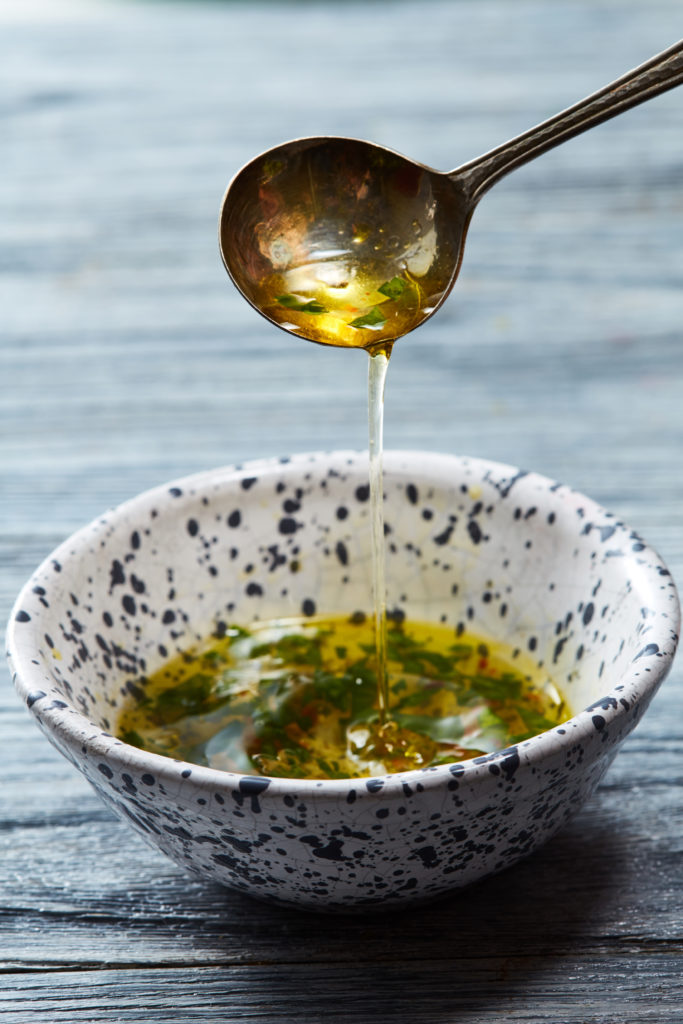
Lemon herb butter is very easy to prepare: combine 5 tablespoons of any lemon herb (except for lemongrass) with a stick of room temperature unsalted butter and mix well by hand or use a food processor. Your lemon herb butter can be melted over vegetables or meats or grilled chicken or fish or hot herb bread.
Lemon herb-infused oil for brushing on grilled meats, fish, or vegetables or to use in stir-fries or to drizzle on pasta or rice dishes (sparingly) is also easy to make: heat 1 cup of olive oil in a skillet until hot; add 2 or 3 cloves of garlic minced; stir until the garlic begins to brown. Remove from heat and add a third of a cup or slightly more of fresh lemon-herb leaves and steep for one hour at room temperature. Strain the leaves from the oil and store them in a capped glass jar with a nonmetal lid for up to two weeks.
Here are lemony herbs easy to grow
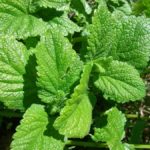
Lemon balm (Melissa officinalis)
- Kitchen use: Use fresh leaves finely chopped in salads, and white sauces for fish, mayonnaise, sauerkraut, poultry, and pork. Add to fruit salads, jellies, custards, fruit drinks, and wine cups. Infuse fresh leaves for Melissa tea. Add to blended vinegar: lemon balm and tarragon are well-matched.
- Description: Lemon-scented, hairy, strong-veined, toothed, oval, and light green leaves; pale yellow flower blooms in clusters, and matures to white to pale blue.
- Grow: Grow in full sun with midday shade; grow in moisture-retentive, well-drained soil. Allow 2 feet in all directions when planting; bushy and mounding form. Not hardy below 20°F.
- Propagate: Sow in spring; divide plant or take stem cuttings in spring or fall; self-sows.
- Harvest: Flavor best when flowers begin to open; handle gently, bruises easily.
- Preserve: Dry leaves; add fresh leaves to vinegar.
- Varieties: ‘All Gold’ and variegated ‘Aurea.’
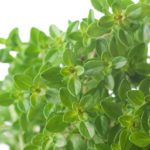
Lemon thyme (Thymus x citridorus)
- Kitchen use: Use in place of lemon, lemon zest, or lemon flavoring in any recipe. Use fresh for true lemon flavor; loses its delicate citrus scent when dried. Add to chicken, fish, hot vegetables, fruit salads, and jams.
- Description: Lemon-scented, bright green leaves. Grows upright to 12 inches high and wide.
- Grow: Plant in full sun in light. Grow in well-drained soil, slightly alkaline—not too rich in organic matter. Set transplants 15 inches apart. Prune frequently. Protect in winter; can grow indoors.
- Propagate: Sow in spring; take 2 to 3-inch stem cutting and heel in spring or summer; divide roots or layer stems in spring or fall.
- Harvest: Pick in bloom for best flavor; summer blooming.
- Preserve: Dry leaves; make thyme vinegar or oil.
- Varieties: ‘Aureus’ is golden lemon creeping thyme with yellow-tinged leaves sprawling habit; ‘Lemon Frost’ is low growing; ‘Silver Lemon Queen’ has silver splashed leaves; ‘Lemon Curd’ is long wiry with narrow leaves.
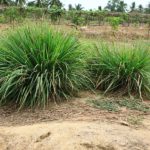
Lemongrass (Cymbopogon citratus)
- Kitchen use: Use the bottom third of the stock; peel off the outer sheath and thin slice or pound inner stem for salads or seasoning. Use in Thai and Vietnamese cooking.
- Description: Strong lemon-scented; inch-wide strappy leaves growing in clumps. The plant grows 3 to 4 feet tall and 3 feet wide
- Grow: Plant in full sun in well-drained, moisture-retentive soil. Can survive mild winters, otherwise, overwinter in a greenhouse.
- Propagate: Divide the plant in spring or fall; grows from divisions.
- Harvest: Cut off the thick, bulbous stem just above ground level; use the bottom third of each stalk. The upper part of the leaf blades is sharp and too tough to eat.
- Preserve: Thin slice and freeze in a sealed plastic bag; will keep for several months.

Lemon basil (Ocimum basilicum)
- Kitchen use: Use in pesto sauce and to flavor blended vinegar; use to flavor fish or fowl; tear with fingers rather than chop.
- Description: Lemony-scented green, oval, puckered leaves, white flowers; grows to 12 inches tall.
- Grow: Grow in full sun or partial shade in hot regions. Grow in well-drained, moisture-retentive soil. Avoid overwatering; best to water at midday. Grows well in containers and indoors.
- Propagate: Sow in a warm situation after the danger of frost has passed.
- Harvest: Best flavor picked young; harvest often to prevent flowering.
- Preserve: Freeze leaves after lightly coating them in oil or dry. Infuse leaves in oil or vinegar.
- Varieties: ‘Mrs. Burns’ produces large leaves; ‘Sweet Dani’ has a strong scent.
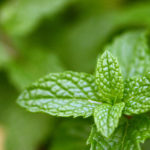
Lemon mint (Mentha x. aquatica ‘Citrata’)
- Kitchen use: Infuse/steep in teas; use for mint sauce, and vinegar; add fresh leaves to new potatoes, fruit salads, and drinks; use in soups and stuffings.
- Description: Smooth, lemon-scented, mid-green leaves. The plant grows to 16 inches tall and wide.
- Grow: Plant in full sun or light shade or sun; prefers well-drained, compost-rich soil. Thin to 16 inches apart. Best to grow in large pots—roots are invasive. Remove flowering stems to avoid cross-pollination between mint species. Can grow indoors.
- Propagate: Sow in spring; take stem cuttings, or divide in spring and fall; stem cuttings will root in water.
- Harvest: Pick leaves just before flowering for the best flavor.
- Preserve: Dry, freeze, or infuse leaves in oil or vinegar.

Lemon bergamot (Monarad citriodora)
- Kitchen use: Flowers can be sprinkled on salads sparingly. Infuse or simmer leaves in tea for 10 minutes to add flavor to tea. Fresh leaf added to China tea gives Earl Gray flavor. Use in wine cups and lemonade.
- Description: Toothed, oval leaf with dark reddish veining; squared stem. Flowers have a tight head with tubular scarlet blooms.
- Grow: Plant in the sun or partial shade in hot regions. Grow in well-drained, moisture-retentive soil rich in organic matter. Thin to 18 inches apart. Not suitable for indoor growing.
- Propagate: Sow in spring; divide or take root cuttings in spring; take stem cuttings in summer.
- Harvest: Pick leaves in spring or in summer when flowers form. Pick flowers when open.
- Preserve: Dry leaves or flowers.
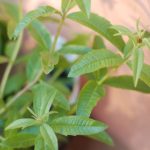
Lemon verbena (Aloysia triphylla)
- Kitchen use: Strong citrus scent and flavor; use fresh leaves to flavor oil and vinegar; infuse/steep leaves as herb tea. Finely chopped leaves to flavor, drinks, puddings, jelly, cakes, and ice cream.
- Description: Long, lance-shaped and toothed, pointed leaves with central vein arranged in threes; stems are ridged, round green in first season, red in second season.
- Grow: Plant in full in sandy, moist but well-drained soil; grows in alkaline and poor soil. Protect from frost indoors.
- Propagate: Sow in spring; root from softwood cutting in late spring.
- Harvest: Leaves can be picked at any time, but best when flowers begin to bloom.
- Preserve: Use fresh leaves to flavor oil and vinegar. Dry leaves.
Related articles:
Best Herbs for Container Growing
Planning the Home Fruit Garden
Garden Planning Books at Amazon:
- Vegetable Garden Almanac & Planner
- Kitchen Garden Grower’s Guide Vegetable Encyclopedia
- Vegetable Garden Grower’s Guide
- Tomato Grower’s Answer Book















